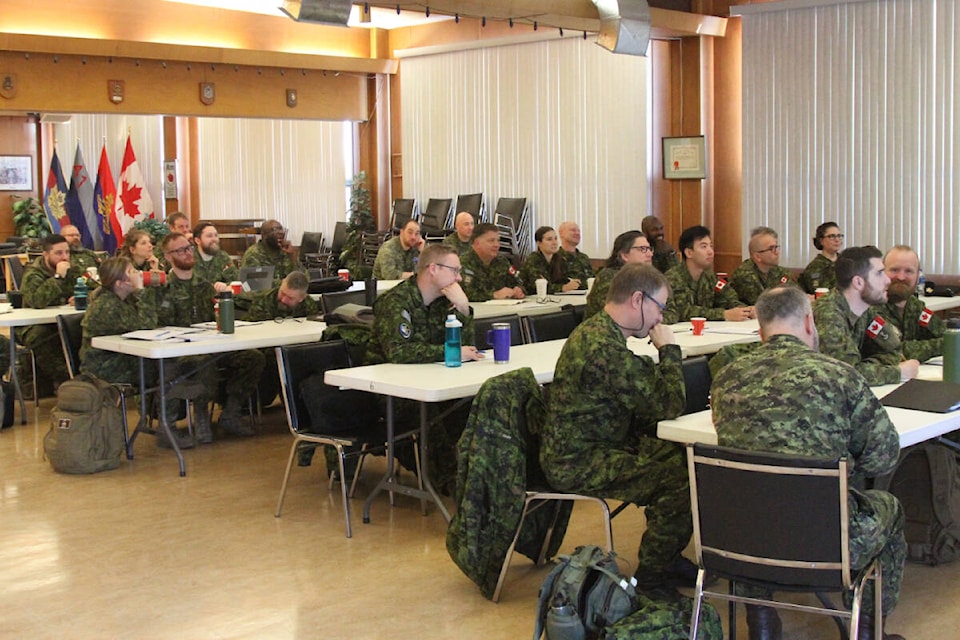Dozens of Canadian Army Reserve soldiers were in Red Deer this weekend to train for domestic emergency operations.
The exercise at the Cormack Armoury featured a lecture and discussion-format training activity, intended to enable Canadian Armed Forces personnel to effectively respond when called upon in emergency situations, such as floods and forest fires.
“This is part one of three exercises to get us ready to be on standby for emergency operations that happen,” said Lt. Col. Christopher Barr, commanding officer of the Loyal Edmonton Regiment.
“Generally this time of year we’re not looking at floods, tornadoes and that kind of stuff. That comes later in the spring and into the fall, so we take advantage of this time of year to reform the team and start training.”
When called upon Barr also serves as commanding officer of the territorial battalion group, which is a force the Army Reserve puts together to assist Alberta with emergency operations.
Alberta Emergency Management field representatives were also on hand for the training session on Saturday and Sunday.
“Each one of them has an area of responsibility in different parts of the province. It’s important … we meet these individuals because they’ll be the ones linking up with up, helping us and guiding us as we bolt in as a military organization working for the municipal authority in the assigned area,” Barr explained.
The second exercise will be in mid-February, when the soldiers will practice their command post. In the third exercise in late March, soldiers will be given a “realistic scenario” to work through a domestic operation, said Barr.
Red Deer was the site of one of these practice exercises about four years ago.
“We can’t forget about the domestic operations in our own backyard because disasters happen and municipalities (can become) overwhelmed. They ask the province and the province sometimes asks for federal assistance, and in certain cases the military’s asked to respond,” said Barr.
Chief Warrant Officer Mark Denney, regimental sergeant major of the Loyal Edmonton Regiment, said these exercises help the soldiers get into the right mindset.
“It’s sort of a composite unit that’s designed to be ready to go within 72 hours,” said Denney.
“We have artillery in (the unit), combat engineers, signals, infantry, armored cavalry, we can call upon medics as well.”
Barr added: “The Reserve forces are from all over the province. Each unit has a different specialty for war fighting, but when you transfer that over to domestic response or emergencies, they bring skillsets that can be used, as well as some of their equipment and vehicles.”
The last major response for the battalion was the Calgary flood in 2013. But smaller units within the battalion have responded to various emergencies over the years.
“It seems like almost every year since 2013, there’s something,” said Denney.
Canadian Armed Forces are also trying to recruit soldiers, Barr noted.
“COVID hit us hard. Recruiting taps kind of turned off and as a result our numbers are down. We’re trying to rebound that, especially with all the future tasks coming upon us, given the international situation,” he said.

